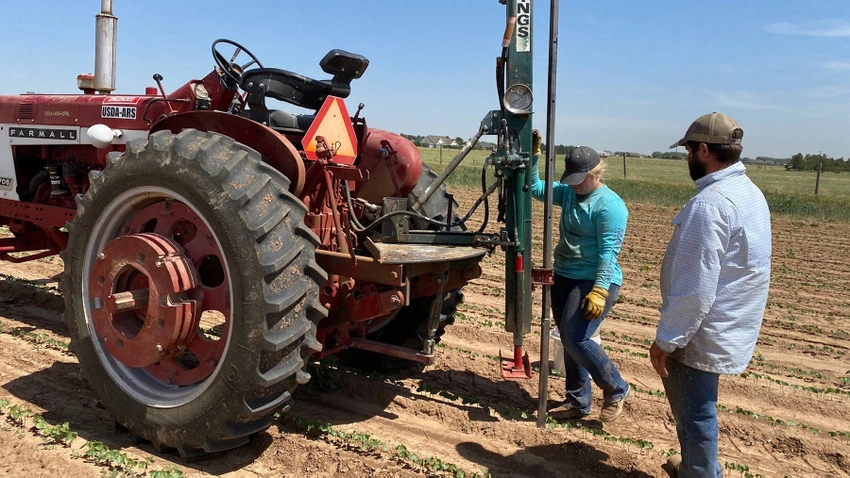Deep soil testing may pay off more this year than many, according to a recently released Texas A&M AgriLife Extension Service publication.
Fertilizing crops helps reach optimum yields by supplementing plant nutrients already in the soil to meet crop fertility needs.
However, producers need to consider what is already present in the soil. With the high input costs and low commodity prices, farmers should deep soil tests to take advantage of any residual nitrogen and other nutrients, Jones and Bell said.
By deep soil testing before planting corn, cotton, or wheat, the AgriLife Extension analysis found projected savings from $13 to $189 per acre are possible when taking advantage of the residual nitrogen in the soil and accounting for it when making growing-season decisions.
“This study shows that even small investments or minor operational changes can lead to large financial savings,” Jones said.
Soil Testing
Agronomists typically recommend soil testing each year, as near to planting time as possible, to assess the availability of nitrogen and other essential nutrients, Bell said.
“Many producers only soil sample the top 0-6 inches,” Bell said. “But deep soil sampling to depths of 6-24 inches or deeper, if feasible, should be done whenever possible. This allows producers to utilize the nitrogen below the upper 6 inches of soil.”
Bell said in addition to reducing fertilizer input costs, proper nitrogen management in crop production systems can impact the need for and rates of other production inputs.
“For example, in cotton, we know that nitrogen over the crop demand can cause aggressive plant growth, so producers have to be more aggressive with their plant growth regulators program,” she said. “There is both an input and production cost.”
Excess nitrogen can also delay cotton maturity, which can impact growing day-limited cotton regions such as the Texas Panhandle, Bell said. So, producers must be aware of residual nitrogen not just to optimize input costs, but also to optimize production.
“We know residual plant nutrient levels in the soil can vary greatly from year to year based on many factors, including fertilizer application rates, rainfall and irrigation, and the cropping system and plant uptake in the prior year,” she said. “That is why annual sampling is important. Although this was only one year’s worth of data, we want to highlight the potential cost savings that can be achieved through deep soil testing.”
The Savings Add Up
While plant growth depends on many nutrients, proper nitrogen application is critical.
While the skyrocketing fertilizer prices from the past two years have come down, they are still high compared to historical averages. From 2016 to 2020, anhydrous ammonia averaged around $500 per ton, which is $200 per ton lower than the $700 price on May 9.
Corn shows the greatest benefit from reduced fertilization expenses because it has the highest nitrogen application rates, ranging from $47 per acre with 25% of the crop nitrogen requirement coming from residual soil nitrogen to $189 per acre for a field with 100% of the crop nitrogen requirement as residual nitrogen, Jones said.
It is not uncommon to see manure-fertilized fields with high levels of residual nitrogen, so producers should especially consider deep sampling fields where manure has been applied.
Cotton registered the second-highest advantage, with cost savings ranging between $30 and $118 per acre. Wheat shows the least benefit due to low nitrogen application rates compared to the other crops, falling between $13 and $53 per acre.
“Our results show that taking advantage of even relatively low levels of residual nitrogen can make a big difference to the bottom line,” she said. “For example, if a producer applies only 75% of their budgeted nitrogen because testing shows 25% is already in the soil, they can save over $30,000 on a 1,000-acre irrigated farm.”
Greater levels of residual nitrogen lead to even bigger savings, reaching a high of more than $130,000 at the 0% application of budgeted nitrogen level or if the soil tests show 100% residual.
“We know, due to significant increases in 2023 production costs, it is well worth spending around $1 per acre for deep soil testing,” Jones said. “With the return on investments that we project, testing is a very smart decision.”






